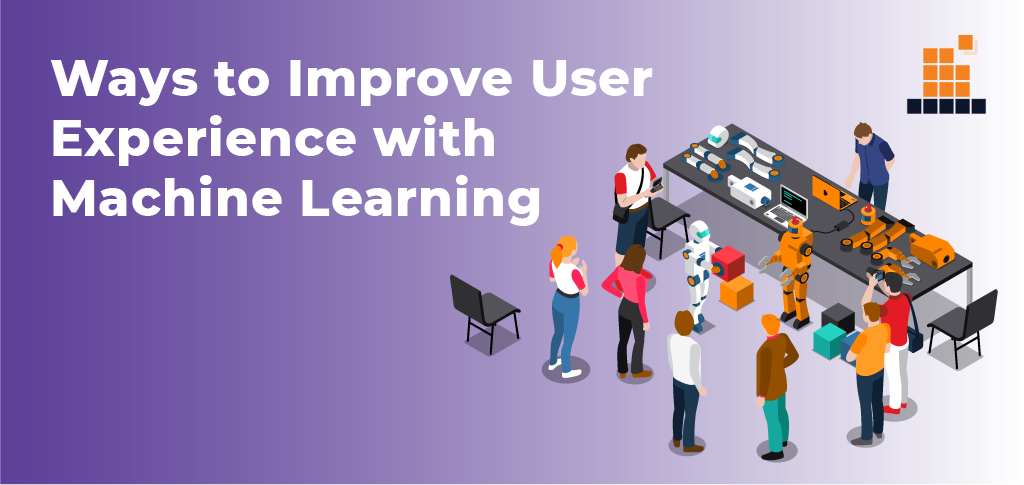Machine Learning has surely matured a lot over the years. It allows us to gain more insights from all kinds of data that we collect. Moreover, we can also implement machine learning to transform the work of a user experience designer, interaction designer, and product designer. In this article, we will introduce to you the five different types of strategies on how we can use machine learning to improve the overall user experience. Let’s get into it.
Offer Next-Level Personalization
Personalization is a hot trend in the year 2020. Machine learning greatly helps businesses to offer next-level personalization to their customers. It provides a more scalable and accurate way for achieving many unique and different experiences for single users. Rather than leaving everyone with just the rule-based personalization, it allows using the algorithms to deliver one-to-one experiences in the form of recommendations for content or product.
Below is a list of personalization examples that are driven by machine learning:
- Offering applicable discounts through machine learning by creating a personalized reward system.
- Personalized emails that recommend products according to the user’s interests based on their previous purchases and search history.
- Suggestions of content for blogs that are based on user’s interest that reduces the bounce rate as well as improves the time they spend on a particular website.
Provide Higher Quality Recommendations
The key for a business to always win is to provide high-quality recommendations that increase their revenue. Even it is beneficial for users as they spend less time searching for products. A study shows that in the year 2018, almost 63% of shoppers preferred product recommendations. This is even higher for millennials. The rate was 69% for those who favored product recommendations and not manually searching for the products.
Collaborative filtering is a method that provides more personalized content recommendations. It offers content suggestions that are based on users with the same taste based on purchases and reviews. Let us take an example of a student and a businessman who have given the same scores to a few restaurants. They share similar tastes. Therefore with the help of machine learning, we can recommend the same restaurant to the student that the businessman has rated 9 or 10.
Improved Customer Service Quality and Speed
Companies and businesses can drastically improve the overall user experience by improving customer service speed. Studies showed that 46% of people expect a response in 5 seconds or less when they are using a chatbot, 43% of people expect the same while using online live chat, and 33% of people when they use a phone or a video call. Thus, it is now time to start using machine learning algorithms for faster chatbots. The top use case for the chatbots is answering time-sensitive questions.
Not responding quickly to emergency questions can leave the company behind with a negative user experience. Also, it’s sometimes impossible for someone to be available all the time to answer difficult problems. Thus, chatbots can quickly learn from previous user interactions. Machine learning algorithms can detect similarities and patterns that allow them to answer the same questions faster in the future. Moreover, they are more scalable than humans. Humans are involved only when the chatbots can’t answer some complex questions. Besides, humans can always feed data into chatbots to improve their question handling.
Optimize Layout by Analyzing User Behavior
We can easily optimize the layout of the software and applications by measuring user behavior. For example – we want to optimize the overall layout of an invoice application. The toughest task will be to develop an invoice creation button. We want to check how quickly users can find this specific button. To do this, we can measure the time that users take to press this button. By measuring time only, we can detect wrongly placed buttons and try to optimize the layout.
In short, we can use machine learning to reduce the time that users spend in finding a function and to efficiently do the A/B testing. Moreover, we can spot patterns also where the users often go back to the previous page. This shows that the flow is incorrect and the user expects something better.
In a nutshell, the main aim is to find interactions that are unclear or require a lot of time to complete, those who often affect the user experience negatively. Apart from that, we need to reduce human errors when we navigate the application to create a better product experience. But, don’t change the order of your UI components a lot.
Sentiment Analysis: Emotion AI
Lastly, the use of sentiment analysis can give a better picture of the user’s emotions when they interact with a website, advertisement, blog, or product. Measuring emotions also require a facial recognition system. But, you can also use textual analysis to check their feelings. However, this strategy is not possible for checking people’s reactions to certain advertisements.
By judging their response to an advertisement or content, we can create even more engaging advertisements. Often marketing teams create different advertisements according to the user’s wealth, age, and interests.
In short, we can use sentiment analysis to create:
- Better content that answers every question
- Advertisements that interests users
- Products that meet users needs precisely
Conclusion
Machine learning is surely a very great tool to improve the user experience. But, before implementing them, we need to validate every machine learning insight. It is valuable to implement the user testing process for validating the changes. To conclude, both machine learning and user experience designs will keep growing and there is no stopping. There are a lot of benefits when we merge machine learning and user experience design.
